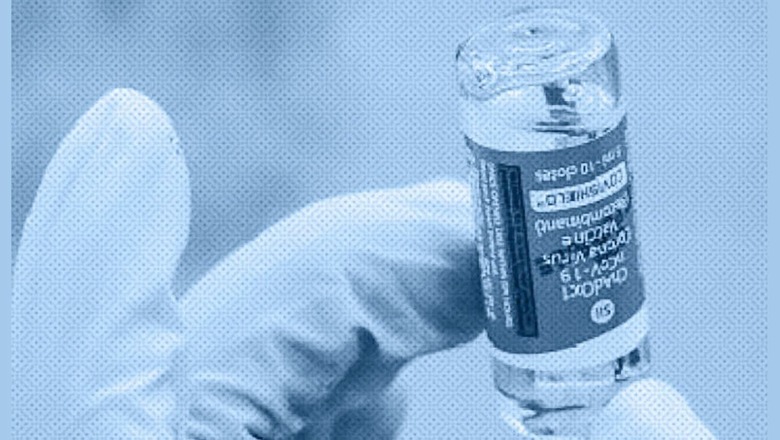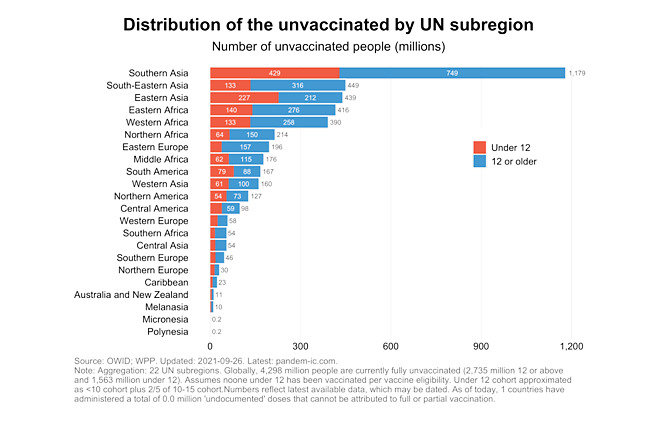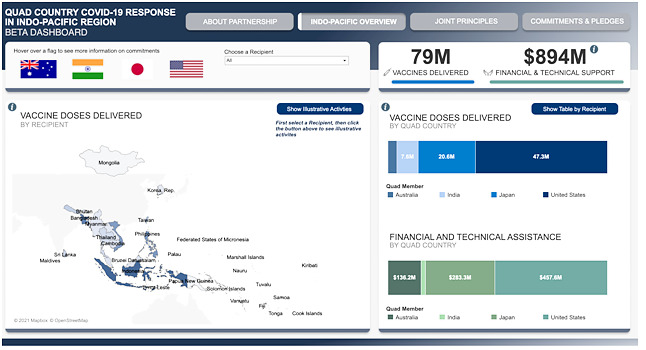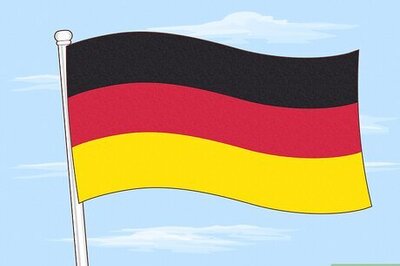
views
Prime Minister Narendra Modi of India, Prime Minister Yoshihide Suga of Japan, Prime Minister Scott Morrison of Australia, and President Joe Biden of the United States of America met at the White House on September 24 to take forward the conversation that started in March 2021. The first Quad Summit had launched the ambitious Quad Vaccine Partnership, which aimed at taking shared action necessary to expand safe and effective COVID-19 vaccine manufacturing and working together to strengthen and assist countries in the Indo-Pacific with vaccination. At the Summit, PM Modi called Quad ‘a force for global good’.
The plan to distribute more than a billion doses of COVID-19 vaccines hinges on India’s manufacturing capacity. Japan, in parallel, is to provide soft loans to expand manufacturing capacity in India, and Australia will give “last-mile” delivery support with a focus on Southeast Asia, along with financial support for the provision of vaccines. The Quad’s original plans from March included supporting countries with vaccine readiness and delivery, vaccine procurement, health workforce preparedness, responses to vaccine misinformation, community engagement, immunisation capacity, and related interventions.
The context of this Herculean task is the stark vaccine inequity that stares the world in the face. Estimates show that the Indo-Pacific region has the largest unvaccinated population (Graph) in the world, and efforts to ensure vaccine coverage thus becomes a moral imperative.

Source: https://pandem-ic.com/
Since the announcement in March, not much was known about the status of the progress of the Quad Vaccine Partnership, and thus, Quad Leaders Summit was one of the most anticipated events of the quarter. It was felt that the Quad partners will need to move quickly, leveraging each other’s strengths to ensure vaccine equity in the Indo-Pacific.
The vaccine commitment remains at the core of the Quad’s cooperation in the first year. At the Summit, President Biden announced that the vaccine initiative is ‘on track’ to produce an additional one billion doses in India. It was shared at the Summit that from March when the Quad Vaccine Partnership was launched, the four countries had both taken actions to expand safe and effective COVID-19 vaccine manufacturing capacity, as well as donated vaccines from their own supplies. For quantitative monitoring of the Quad’s vaccine pledge, a Quad Partnership COVID-19 dashboard was also launched at the Summit. The dashboard offers real-time data at the country level for the Indo-Pacific, tracking both vaccine doses delivered as well as financial and technical support.
ALSO READ | Not Just a Supplier of Low-cost Vaccines, India Must Push Quad for Deeper R&D Collaboration
According to the dashboard, till date, about 79 million doses of vaccines have been delivered along with $894 million worth of financial as well as technical assistance. Of the 79 million doses delivered, India has shared a modest 7.6 million doses across nine countries in the Indo-Pacific, namely, Bangladesh, Bhutan, Fiji, Maldives, Mongolia, Myanmar, Nauru, Nepal and Sri Lanka. These are likely the same doses that went to these countries before May as part of the Vaccine Maitri which India has announced to resume soon.

Source: Quad Country COVID-19 Response Dashboard
Currently, India’s contribution in terms of vaccine doses remains the lowest among the four partner countries, but this is bound to change soon, as production capacity of the Johnson & Johnson vaccine in the country expands. Johnson and Johnson’s single-dose COVID-19 vaccine obtained emergency-use approval in August 2021 although no delivery timeline has been announced yet. However, as most parts of India still have low vaccination coverage, freeing up supplies for the rest of the world will not be easy. Going forward, the most challenging barrier for the Quad Vaccine Partnership will be to strike a balance between India’s domestic requirements including that of the hundreds of millions of unvaccinated children in the country, and the commitment to deliver vaccine equity in the Indo-Pacific by 2022. As of now, Johnson & Johnson is in the process of conducting COVID-19 vaccine trials in India on children aged 12-17 years.
The September Summit has upwardly revised the vaccine target—from 1 billion in March to 1.2 billion—of which 200 million doses will be donations and 1 billion will be produced in India. It was announced at the Summit that Japan Bank for International Cooperation will work with India to enhance key investments of approximately $100 million in the healthcare sector related to COVID-19. The Summit also supported the call for a “global pandemic radar”, with an improved viral genomic surveillance. How these ambitious promises are delivered in the coming months will determine the extent of vaccine access to many countries in the region, and how they are able to limit the scale of the next deadly wave.
The author is Senior Fellow & Head of Health Initiative at ORF working on public health. He is a researcher trained in economics and community health from Jawaharlal Nehru University, New Delhi. The views expressed in this article are those of the author and do not represent the stand of this publication.
Read all the Latest News , Breaking News and Ukraine-Russia War Live Updates here.




















Comments
0 comment